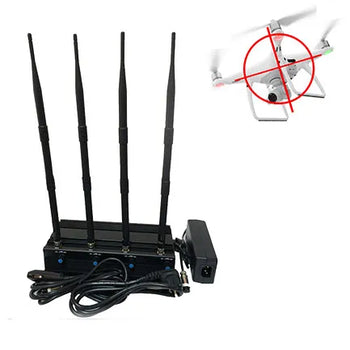"BLISS" to counter jammers blocking GPS reception
It's hard to imagine life without the Global Positioning System (GPS). The United States Government owned and operated United States Air Force satellite radio navigation system is used by government departments, military, businesses and civilians for a variety of needs ranging from landing a flight on the correct runway to the location of the nearest Thai restaurant.
While the 24 Earth-orbiting satellites that keep GPS running may just stop sending signals one day due to a technical glitch, a more likely threat to the operation of the positioning system comes from technology. jamming. In the event of a GPS attack, critical infrastructure such as power grids and ATM networks may cease to function, destabilizing daily life. To avoid such a horrible scenario, experts have been working tirelessly for years to find a reliable antidote to GPS jammers.
One such team operates out of the Aerospace Communications System Implementation Subdivision and is developing Blind Interference Signal Suppression (BLISS) technology, which experts say is designed to counter jamming signals that can interfere with GPS reception.

How does GPS work?
The Global Positioning System uses satellites orbiting the Earth that send out radio signals, which reach a GPS receiver to determine positioning by triangulation. By triangulation, a method in which three separate points are measured to calculate a location. GPS works in portable devices like smartphones, is found in vehicle navigation and positioning systems, and in small GPS tracking devices. Besides determining geographic location, GPS also provides a critical dimension – time. Today, GPS has become an integral part of multiple industries including communications, power and utilities, financial services, emergency services, transportation, among others. In addition, many other devices rely to some degree on the positioning system.
How do jammers obstruct GPS signals?
GPS jammer were first created for military organizations and spy agencies - to confuse the enemy on exact locations, or to ensure that enemy GPS guided missiles/bombs do not reach target. In recent years, civilians have sought out these devices for their privacy. However, most civilians lack the technical know-how to operate these devices. GPS jammers work by broadcasting noise on the same frequencies used by satellites, to ensure that receivers cannot pick up the signals. Depending on the broadcast power of the jammer, it can disrupt GPS reception for a few meters, a few kilometers, or even more.
Happiness
The developers of Blind Interference Signal Suppression (BLISS) of the developing Aerospace Communication System Implementation Subdivision say that the BLISS can be implemented with existing receivers, as a stand-alone device between a GPS receiver and its antenna, or integrated into a future receiver chipset. "BLISS uses a proprietary set of algorithms that estimate the specific characteristics of a high-power jammer, which in turn enables it to mitigate the effects of a wide range of powerful jammers," said Dr Philip Dafesh, one of the architects of BLISS.
Unlike conventional methods, BLISS is also effective against jammers that match the signal of interest and does not allow jammers that rapidly change their frequency or phase characteristics. Its developers say the technology holds great promise and has been licensed to Talen-X, a subsidiary of Orolia, a company specializing in the manufacture of precision time and frequency products. "We have a very talented and diverse workforce that uses cutting-edge technologies from multiple fields to create and deliver working proof-of-concept devices, such as BLISS," said Department Director Dr. Esteban Valles. implementation of digital communication.













